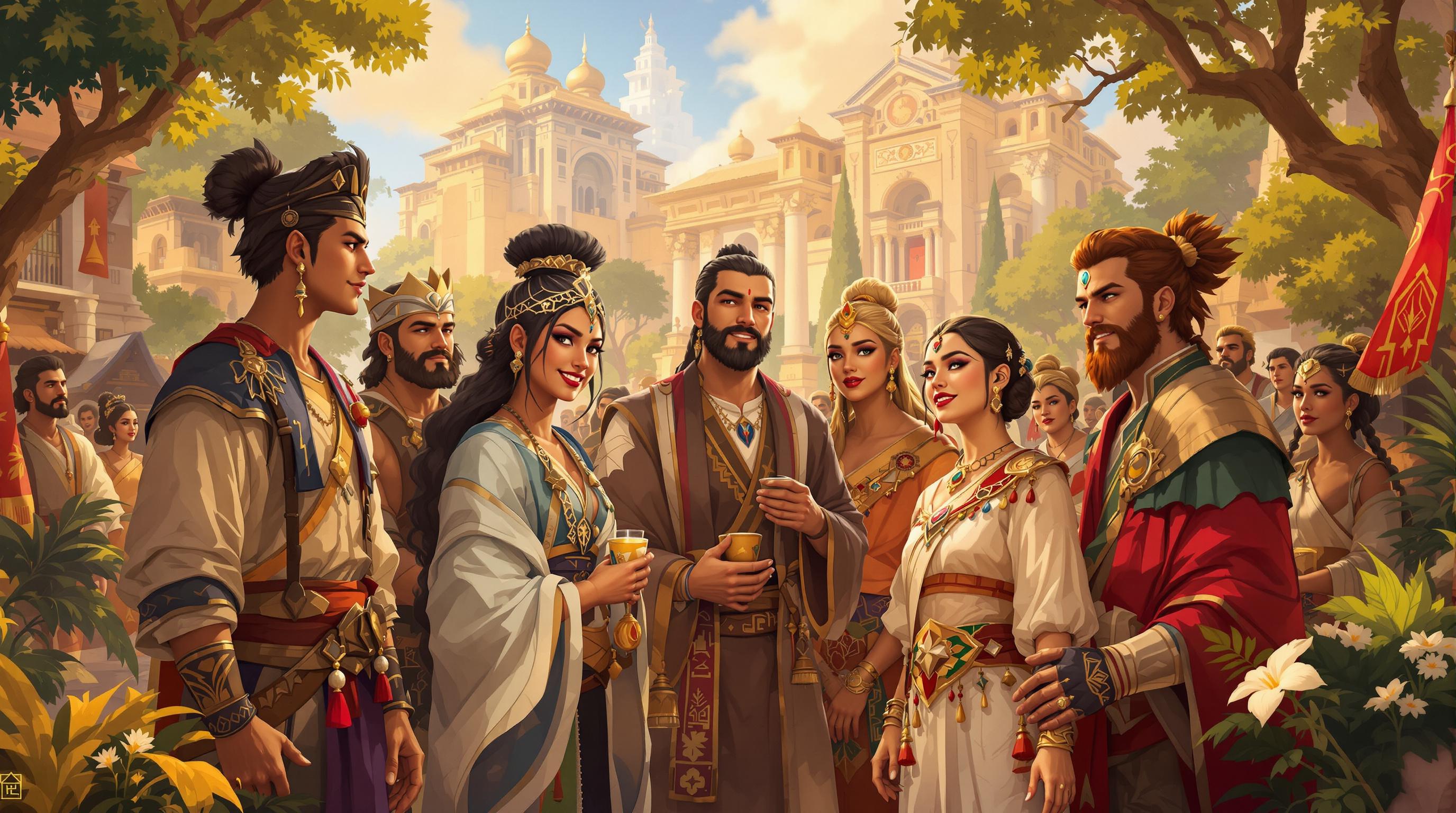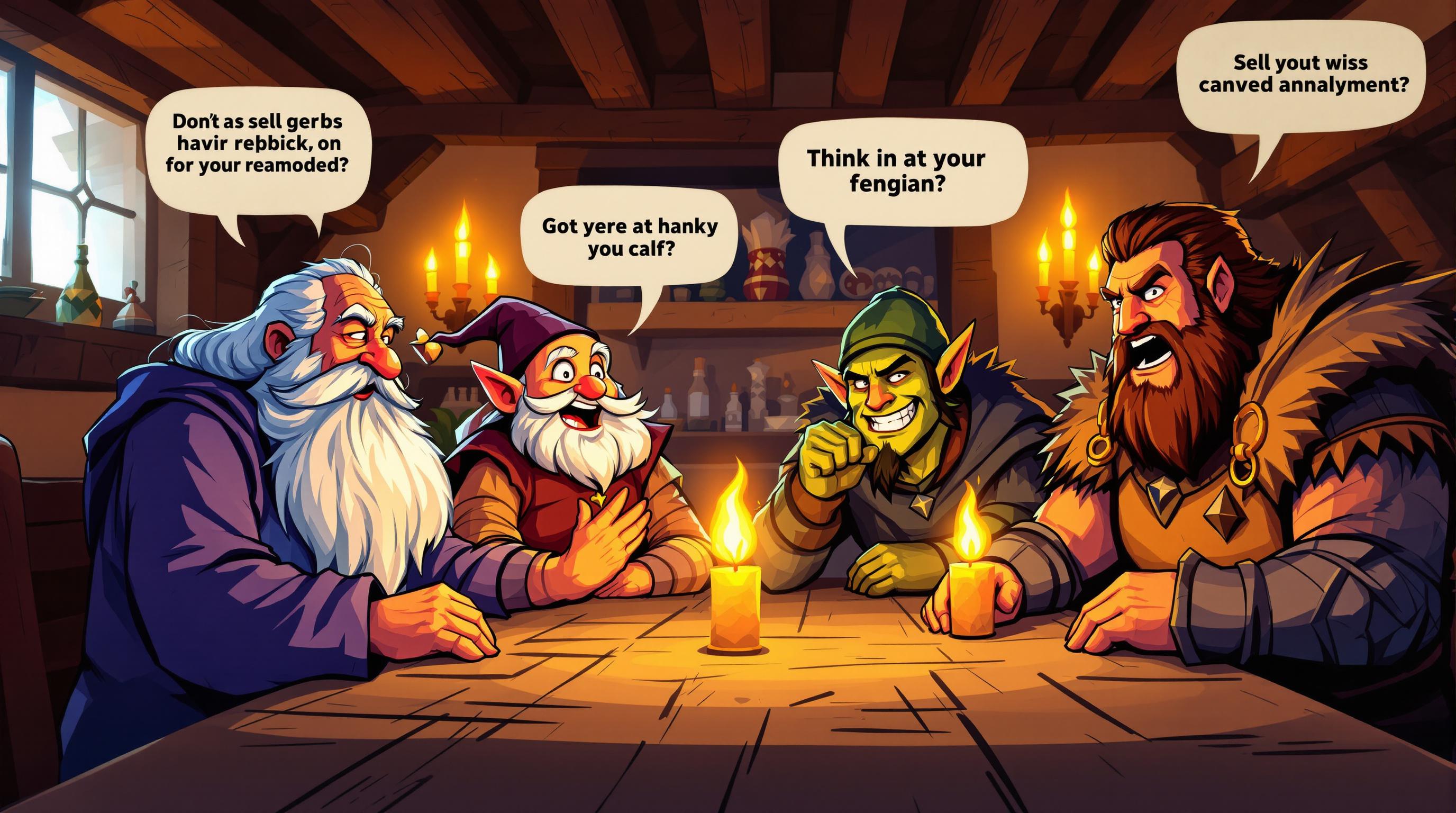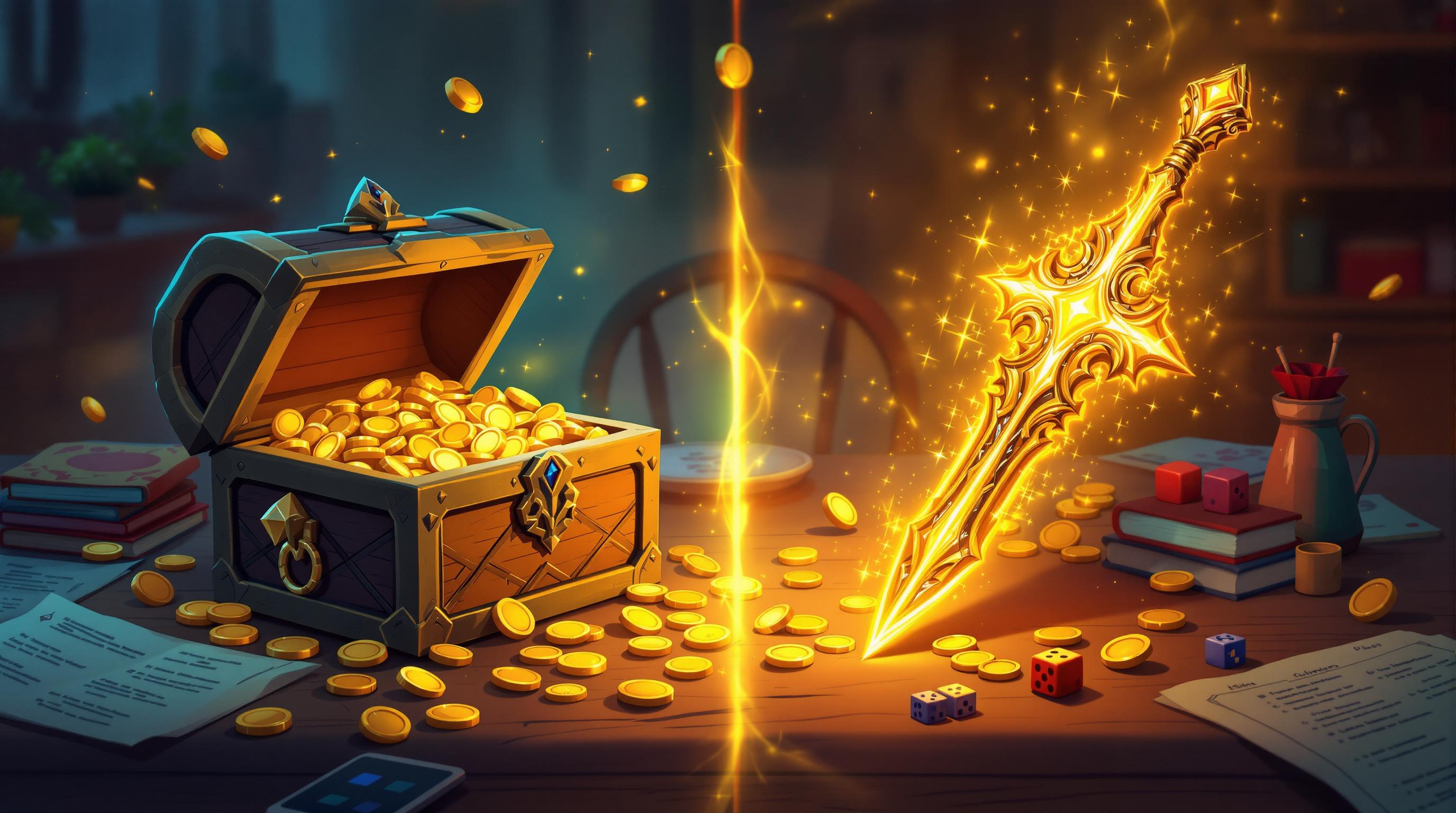Music can turn your RPG campaigns into immersive, unforgettable adventures. Just like a movie score, it sets the mood, enhances key moments, and helps players connect with the story. Here's how to make it work for you:
- Choose the Right Tracks: Match music to your campaign's genre and themes (e.g., orchestral for fantasy, ambient for sci-fi).
- Create Playlists: Build playlists for exploration, combat, social scenes, and dramatic moments.
- Set the Mood: Use background music at low volume to enhance the atmosphere without overpowering dialogue.
- Assign Character Themes: Leitmotifs make NPCs and factions instantly recognizable.
- Handle Technical Details: Use tools like Syrinscape, Spotify, or Roll20 for seamless music integration.
Want to dive deeper? Learn how to manage playlists, adapt music to player choices, and stay legally compliant for streamed games in the full guide.
A Film Composer's Guide to D&D Music
Selecting Music for Your Campaign
Choosing music for your RPG campaign involves balancing the genre, mood, and practical considerations. The goal is to enhance the experience without overshadowing dialogue or narration.
Matching Music to Campaign Themes and Genres
Each campaign setting benefits from music that aligns with its theme. For instance, orchestral scores featuring medieval instruments work well for fantasy settings, while other genres call for different approaches:
| Genre | Musical Style | Key Elements |
|---|---|---|
| Fantasy | Orchestral/Medieval | Strings, horns, folk melodies |
| Sci-Fi | Electronic/Ambient | Synths, spacey soundscapes |
| Horror | Atmospheric/Dark | Dissonance, subtle percussion |
| Modern | Contemporary/Urban | Jazz, rock, electronic touches |
Instrumental vs. Vocal Tracks
Instrumental tracks are often the better choice, as they enhance the atmosphere without competing with spoken words. However, vocal tracks can be used strategically for specific moments.
| Track Type | Ideal Uses |
|---|---|
| Instrumental | • Background ambiance during narration |
| • Thematic elements for locations or factions | |
| • Seamless looping tracks | |
| Vocal | • Tavern scenes or social settings |
| • Character introductions | |
| • Campaign opening/closing themes | |
| • Story-driven moments where lyrics fit the narrative |
Creating Playlists for Specific Moods
Tailor playlists for various scenarios to keep the music aligned with the action:
| Scenario Type | Suggested Track Count |
|---|---|
| Exploration | 10-15 tracks |
| Combat | 8-12 tracks |
| Social | 6-8 tracks |
| Dramatic | 4-6 tracks |
Tools like Tabletop Audio (tabletopaudio.com) and Syrinscape provide pre-licensed audio designed for specific scenarios. To ensure smooth transitions between playlists, make sure your technical setup is up to the task - a topic covered in the 'Technical Setup' section.
Using Music to Improve Gameplay
Choosing the right tracks is just the start. How you use music during gameplay can shape its emotional and narrative impact.
Setting Atmospheres with Music
To create immersive environments, the music needs to match the scene's mood and setting. Keep background music at 20-30% below speaking volume so it enhances the story without overwhelming it.
| Setting Type | Musical Elements |
|---|---|
| City Scenes | Energetic, with varied instruments |
| Wilderness | Nature-inspired sounds, soft melodies |
| Dungeons | Deep drones, unsettling tones |
| Combat | Fast-paced, percussion-heavy tracks |
Assigning Themes to Characters and Factions
Using recurring themes, or leitmotifs, for characters and factions helps players instantly recognize and emotionally connect with them. This technique has been highly effective, as seen in Critical Role's third campaign.
"The right piece of music at the right moment can elevate a good D&D session into an unforgettable experience." - Matthew Mercer, Dungeon Master and Voice Actor, Critical Role
Here’s how you can pair musical styles with character types:
| Character Type | Musical Style |
|---|---|
| Noble Heroes | Bold, brass-heavy themes |
| Mysterious NPCs | Light, ethereal tones |
| Villains | Ominous, discordant sounds |
| Faction Leaders | Intricate, multi-layered compositions |
Enhancing Key Moments with Music
Dramatic moments in gameplay can become unforgettable with the right music. Here are some tips to maximize their impact:
- Adjust volume levels dynamically during key dialogue.
- Use smooth transitions to shift moods seamlessly.
- Build playlists with rising tension for big confrontations.
- Employ silence strategically during shocking or emotional scenes.
| Moment Type | Music Approach |
|---|---|
| Plot Twists | Abrupt changes in style to highlight surprises |
| Boss Battles | Intense, driving rhythms for added energy |
| Character Deaths | Sparse, simple compositions to evoke emotion |
| Victory Scenes | Grand, full orchestration to celebrate success |
For best results, combine these techniques with the playlist strategies discussed in 'Creating Playlists for Specific Moods.'
sbb-itb-b8b00a5
Technical Setup for Music in RPG Sessions
Integrating music into RPG sessions requires practical tools and strategies that align with your storytelling goals. This section focuses on the technical side, building on earlier playlist strategies while addressing common challenges.
Audio Equipment for In-Person Play
The right audio setup can make or break the atmosphere of a session. Tools like the JBL Charge 5 and Mackie Thump GO are popular among Game Masters for their portability and sound quality. Place your speakers strategically to ensure the sound fills the room without drowning out conversations.
| Equipment Type | Recommended Options | Typical Cost Range |
|---|---|---|
| Portable Speaker | JBL Charge 5, Anker Soundcore 2 | $40-150 |
| PA System | Mackie Thump GO | $300-500 |
| Basic Mixer | Behringer Xenyx 502 | $50-100 |
"Always do a sound check before your session. Have players adjust their individual volume settings for both voice and music to find the right balance." - Alex Rodriguez, audio engineer and RPG enthusiast
Using Streaming Platforms for Online Play
Virtual games call for different tools to manage audio effectively. Platforms like Roll20 and Foundry VTT come with built-in audio features, while Discord bots and other solutions offer added flexibility.
| Platform | Key Features | Best Use Case |
|---|---|---|
| Roll20 | Built-in jukebox | Integrated VTT play |
| Discord + Music Bots | Playlist management | Voice chat sessions |
| Spotify Group Session | Synchronized listening | Premium user groups |
| Watch2Gether | YouTube synchronization | Free alternative |
Managing Music During Gameplay
Controlling audio during gameplay is critical to maintaining immersion. Simple techniques can address common issues and enhance the experience, complementing the character themes discussed earlier.
| Common Issue | Solution |
|---|---|
| Audio Lag | Use separate audio channels to avoid lag |
| Volume Inconsistency | Normalize audio files before the session |
| Connection Problems | Enable offline mode for reliability |
| Background Noise | Use noise-cancelling tools |
"I recommend using Spotify Premium for its high-quality audio and ad-free experience. Invite players to co-create playlists." - Sarah Chen, creator of Symphonic Storytelling podcast
Addressing Common Music Challenges in RPGs
Managing music in RPGs requires careful planning to ensure it enhances the experience without becoming a distraction. Let’s tackle some common challenges and their solutions.
Preventing Distractions and Repetition
Background music should support the story, not steal the spotlight. Picking tracks that blend seamlessly with gameplay is crucial.
| Challenge | Solution | Implementation |
|---|---|---|
| Lyrical Interference | Opt for instrumental tracks | Use ambient soundscapes or orchestral music |
| Volume Balance | Adjust background levels | Keep volume consistent and unobtrusive |
| Musical Fatigue | Rotate long playlists | Aim for 2-3 hours of music per theme |
| Sound Consistency | Stick to themed soundscapes | Mix ambient tracks with periods of silence |
To avoid repetitive loops, curate playlists with enough variety to keep things fresh during extended sessions.
Adjusting Music to Player Choices
Flexibility is key when players take unexpected turns. Quick access to the right music can help maintain immersion.
| Scenario Type | Music Adaptation Strategy |
|---|---|
| Unexpected Combat | Use a combat playlist with smooth fade-ins |
| Sudden Plot Twists | Transition to neutral ambient tracks |
| Character Moments | Have character-specific themes ready |
| Environmental Changes | Layer soundscapes with adjustable elements |
Having ambient playlists on standby ensures smooth transitions during narrative shifts.
Legal Considerations for Music Use
Streaming your RPG sessions? Be mindful of copyright laws to avoid interruptions. Platforms actively monitor for unauthorized content, so it’s essential to use approved music sources.
| Usage Type | Legal Solution | Example Service |
|---|---|---|
| Live Streaming | Use stream-safe music | Pretzel, Monstercat |
| Public Performance | Access royalty-free libraries | MyNoise |
| Recorded Sessions | Opt for Creative Commons music | Free Music Archive |
| Commercial Use | Purchase licensed soundtracks | Syrinscape |
Investing in licensed or royalty-free music ensures your gameplay remains uninterrupted and legally compliant.
Conclusion: Using Music to Improve RPG Storytelling
Music can elevate RPG sessions into something that feels straight out of a movie. By following the tips shared in this guide - from building playlists to handling technical details - Game Masters (GMs) can take their storytelling to the next level.
As storytelling expert Dr. Sarah Lynn Bowman puts it:
"The right music can transport players into the game world more effectively than any amount of description."
Thanks to modern tools, adding music to your sessions has never been easier. Platforms like Incompetech and Free Music Archive offer plenty of royalty-free tracks, while specialized soundscapes can bring your world to life.
Here are the key takeaways to keep in mind:
- Choose Wisely: Pick music that enhances your story without overpowering it.
- Be Prepared: Smooth transitions and balanced volume are a must.
- Listen to Your Players: Check in with your group to see how they feel about the music.
- Stay Legal: Use properly licensed or royalty-free tracks, especially for streamed games.
When creating playlists, make sure your choices fit your game’s tone and themes. For example, eerie ambient tracks work well for horror campaigns, while epic orchestral pieces are perfect for high-fantasy adventures.
FAQs
How to incorporate music into a D&D campaign?
To keep the narrative flowing smoothly, focus on these four playlist categories:
- Ambient Exploration: Use subtle, atmospheric tracks like those from Tabletop Audio to set the tone.
- Combat Encounters: Choose percussion-heavy tracks to match the intensity and rhythm of battles.
- Character Themes: Assign distinct motifs to key NPCs or PCs. (For tips, check out the 'Assigning Themes to Characters' section.)
- Location-Specific: Create unique soundscapes for important settings such as taverns, forests, or dungeons.
If you're running an in-person game, tools like Syrinscape can provide tailored soundscapes. Keep the volume low enough so the music enhances the experience without overshadowing the dialogue.


